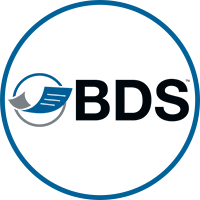A wide format printer differs from a standard printer, with a higher output volume and requires special equipment.
Are you considering buying a wide format printer? There are many different types to consider when looking for a new wide format printer. One of the essential elements of wide format printing is the type of ink used when printing. To determine which ink to use for each project, here are the four main types of large format printer inks.
Consider the pros and cons of each ink type when choosing a wide format printer.
Wide Format Aqueous Inks
There are two types of water-based inks: dye and UV. As dye inks are applied, water is mixed with them, and then the water evaporates, leaving the ink behind. UV inks use chalk dust suspended in water, which forms images when the water evaporates, leaving behind chalk-like dots.
- Uses for Aquenous inks: Sunlight will quickly fade these types of inks, so it is best to keep them indoors. Additionally, dye inks are not waterproof, so they are best used for short-term promotional purposes.
Wide Format Printers Solvent Ink
Solvents and pigments are mixed to produce the printing process. This mixture is applied to the substrate by the printer; once the solvent evaporates, the color layer remains. Printing requires special care because they use toxic chemicals in creation.
- Uses for Solvents: Solvent prints are less expensive and better suited for outdoor use like vinyl graphics. They are waterproof and hold up well in all types of environments.
Wide Format UV Printers
Using ultra-violet (UV) light to dry the ink makes them instantly dry. Prints made with a UV printer require no ventilation, unlike those made with solvent-based printers. They can print on coated or uncoated paper and run at higher speeds.
- There are several surfaces on which UV ink is used, but they are expensive.
Wide Format Latex Printers
In terms of large format printing, this is the most advanced method. Water and polymers (also known as latex) make up the ink, which acts like a solvent ink but with less dangerous toxic chemicals. Using the prints in any environment is safe because of the curation process carried out inside the printer.
- Uses for latex wide format printers are less expensive and better suited for outdoor use like vinyl graphics.
Wide format printing requires selecting the appropriate ink depending on the project type, the paper type, and the use of the material.
Paper Types for Wide Format Printers
Buying the right paper for your wide format printer is crucial. There are a variety of wide format papers available, but not every wide format printer can handle them all. Our guide will help you select the correct type of paper for your printer by breaking it down into a few sections. Consult your wide format printer manufacturer about the exact paper types it can use.
What determines the type of paper you need?
- Ink Types
We discussed the types of inks and toners used in wide format printers at the beginning of the article, so knowing what kind of ink you are using will help you choose the right type of paper. - Rolls of paper or cut sheets
In most cases, wide format paper is purchased in rolls, allowing high-volume printing without requiring intervention. Another option is cut sheets which can be helpful if you only want to print one or two copies.
Note: You do not need to use the same brand of paper as your printer manufacturer. - Wide format paper roll widths, sheet sizes, and thicknesses
- Millimeters are used to measure paper thickness. The paper you use may not feed correctly into the printer if it is too thin or too thick, resulting in blurry lines and errors.
- The width of the paper roll is measured in inches, depending on the size of your wide format printer.
- Paper rolls are typically sold in lengths of 500 feet. Roll length is expressed in feet.
Wide Format Printer Versus Plotter
The terms wide format and plotter are often used interchangeably. While both create large, high-resolution images, their printing methods differ.
A plotter is a specialized printer that draws continuous lines using an automated pen. Wide format printers replicate graphics by applying ink dots.
A quick look at the differences between wide format and plotter printers:
Output
Raster images, bitmaps, and pixels can be printed quickly and cost-effectively with wide format printers.
A wide format plotter produces crisp vector graphics but at a slower rate.Software
Typical wide format software includes Adobe Photoshop, Adobe Illustrator, and Adobe InDesign.
For specialized projects, image editing is available to plotters via Corel, Flexi, and CAD.Design Needs
The wide format printer creates print banners, tradeshow signage, wall graphics, point of purchase displays, posters, yard signs, fabric, and textiles.
A plotter printer creates blueprints, diagrams, graphs, and technical drawings.
You can determine whether you need a plotter or a wide format printer by knowing your design needs. Plotters are generally used in architecture, construction, and government industries.
Benefits of Wide Format Printing for Business
Create large format print marketing materials in-house, such as banners, graphics, posters, and signs. The wide format printer revolutionizes your company’s prints with exceptional technology, quality, and speed. You won’t have to waste time running to a print shop anymore. With a wide format printer, you can control your printing.
Which Wide Format Printer is Best?
When selecting the best type of printer to produce your large format graphics, many variables come into play. The print jobs you perform will ultimately determine which wide format printer you need.
Would you like to learn more about how wide format printers can benefit your business? Contact us today to discover additional benefits of a wide format device and your options.
Sources:
Choosing Materials for Wide-Format Inkjet Printers and Xerographic Copiers (freedompaper.com)






